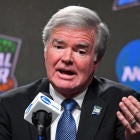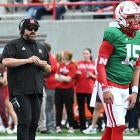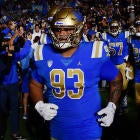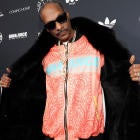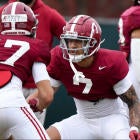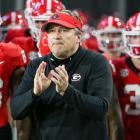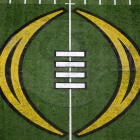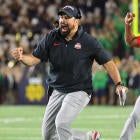MINNEAPOLIS -- The NCAA does nothing to change its hallowed "collegiate model" -- aka amateurism -- without pressure.
Pressure from the courts, pressure from lawyers, pressure from potential lawsuits.
- That cost of attendance stipend that essentially is "pay for play" has been around since 2015. That evolved out of the NCAA being found guilty of violating federal anti-trust laws in the O'Bannon case.
- The celebrated transfer portal was a begrudging change to a half-century old rule that allowed schools and coaches to block athletes from transferring to the school of their choice.
If neither rule was passed, the NCAA would likely face further legal battles. And that's just a conversation starter.
That's why it was refreshing to hear NCAA president Mark Emmert open the door just a bit on players owning their name, image and likeness.
Novel concept, I know. Athletes taking control of their own human essence. Judging from what we heard Thursday at the Final Four, this is the latest legal hill the NCAA is not going to die on.
The legal pressure on that issue is a bill introduced by a North Carolina representative that would allow athletes to profit off what is lawfully theirs.
A similar bill is being introduced in California.
"Signing on with a university, if you're a student-athlete, should not be [a] moratorium on your rights as an individual," North Carolina Rep. Mark Walker said last month.
That was essentially the core of the O'Bannon suit. The former UCLA star sued when he realized his image on the cover of a video game was being used to move product.
The NCAA lost the case, but compensation to the athletes was capped on appeal.
When asked about Walker's bill Thursday, Emmert seemed open to considering some form of athletes capitalizing on their name, image and likeness.
"We've talked to the congressman and tried to understand his position," Emmert said in his annual state of the union address at the Final Four. "There is very likely to be in the coming months even more discussion about the whole notion of name, image and likeness [and] how it fits into the current legal framework.
"Similarly, there needs to be a lot of conversation about how, if it was possible, how it would be practical. Is there a way to make that work? Nobody has been able up with a resolution of that yet."
What you didn't hear is Emmert dismissing the concept out of hand. He's too smart for that now. The NCAA has been found guilty twice in the last five years of violating federal anti-trust laws. It's not even worth debating whether the NCAA is a monopoly.
It's now just a case of who has better lawyers. It should be considered significant that the NCAA has elevated its top legal officer, Donald Remy, to Chief Operating Officer (COO).
"It's mostly just a codification of how we operate," Emmert told me. "I wouldn't read too much into it. "
Except that at most major companies, the COO, at some level, develops strategy, initiatives and philosophy.
Emmert has learned a lot since 2013. That was the year he was upset at my evaluation of his job performance -- I had called for his firing -- and said, "I know you're disappointed, but I'm still here."
In the subsequent years, Emmert has been coached up on how to interact with the media. He's more measured, not inclined to say much of substance.
Even though Emmert wields little more than a bully pulpit, he understands how his views reflect on the NCAA. So he's gone pro on corporate speak.
I asked him about the biggest indictment of that collegiate model I can remember. It came from Judge Claudia Wilken in the Alston case.
It was the latest case to seek removal of the cap on athlete compensation beyond room, board, books, tuition and cost of attendance.
In issuing her injunction, Wilken cited Olympic stipends, bowl gifts and cost of attendance as essentially elements that mark "pay for play," -- a phrase the NCAA loathes.
She said NCAA rules that "limit or forbid student-athlete compensation do not follow any coherent definition of amateurism."
The only difference, she said, is the NCAA has decided to allow its version of compensation and still call it amateurism.
That brings us back to name, image and likeness. Allowing players to profit off their talents is just, fair and should be allowed.
Depending on how much the NCAA wants to partner with the players, we could be talking a joint-licensing agreement for apparel sales. Zion Williamson could make a few bucks off his autograph.
Nobody gets hurt.
But the NCAA's default court argument is that if athletes are compensated beyond current limits, interest will shrink, attendance will fall and locker rooms will be divided.
That's been proven in the last year to be more than false. We just experienced the highest-paid athlete in the history of college sports. Oklahoma's Kyler Murray signed a $4.6 million bonus with the Oakland A's. (Since returned when he pursued football.)
That didn't divide the locker room. Jealousies didn't fester. Murray won the Heisman Trophy and brought fame to his school, himself and his teammates.
There may have been higher-paid athletes but they have been rewarded on the black market created by the NCAA limiting compensation. See: The FBI investigation into college basketball.
"Whatever understanding humans have of amateurism, they enjoy watching the sports played by these athletes who receive these benefits," Wilken wrote.
No matter how big those benefits are.
I asked Emmert about Wilken's assertion that the NCAA itself already participates in "pay for play" -- Wilken's words in the injunction -- by allowing those bowl gifts, free insurance premiums and monthly stipends.
"I've been really clear we like virtually all of the rulings that have been made clear that college athletics is about college students playing other college students, not employees playing employees," Emmert said. "We've had a number of rulings from the federal courts … that have reinforced that and agreed with that notion."
That didn't come close to answering the question. It wasn't supposed to. More corporate speak.
That leaves the future open to interpretation. The Alston case allows compensation to athletes if it is, "tethered to education." Let it be known that conferences are freaking out trying to figure what that really means.
Left to their own interpretation, a conference could offer a car to an athlete who has no other way of getting to class. Hey, it would be "tethered" to education.
It's not surprising then that Wilken has stayed in the case as a sort of referee to adjudicate such matters.
That doesn't quite address the core issue: Because [more of] the money can't be spent on athletes, it goes to seven-figure coaches. It goes to gilded facilities.
And the process becomes downright silly when the pool of unregulated cash is spent on a commissioner who gets a $20 million bonus (the Big Ten's Jim Delany) and a conference (Pac-12) trying to raise a $750 million equity stake.
Meanwhile, the average athlete spends 50 hours a week on his/her sport. That's what a Pac-12 study concluded a few years ago. No wonder there are bills being introduced in North Carolina and California. The world is beginning to find out.
Emmert is a reasonable man. But he is a bit like the captain of a ship springing multiple leaks. He can order repairs, deny the obvious. But sooner or later, the boat is going to sink.












